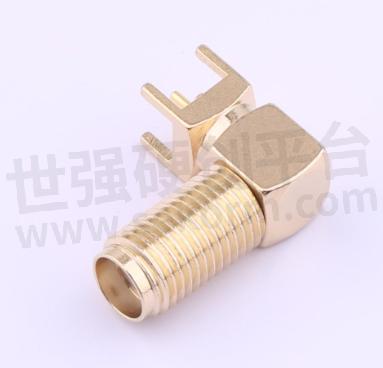Exploring the Development Trends of Connection Components

In the development of connecting components, attention is primarily focused on several aspects: miniaturization, modularization and integration, high frequency and high precision, high reliability, high power transmission, and low cost. Miniaturization of Connectors enables multifunctionality and portability in the overall system, while also reducing material and transportation costs, and energy consumption. In addition, miniaturized components can achieve high-density installation, saving space. For instance, micro coaxial connectors like SSMP and 3SMP have been developed to meet the requirements of spatial electronic systems.
Modularization and integration have become increasingly important as communication technology has advanced. Now, the overall system tends to be modularized and integrated, requiring high-density interconnection between modules and boards in dense spaces. Blind plug coaxial connectors and "board-to-board" coaxial connectors can achieve interconnection in tight spaces while meeting the modularization requirements of electronic devices.
To achieve higher data transmission rates, connectors must adapt to increasingly high operating frequencies. Millimeter-wave connectors like 2.92mm, 2.4mm, 1.85mm, and 1.0mm have emerged successively, with working frequencies ranging from 40GHz for 2.92mm to 110GHz for 1.0mm. As connector size becomes smaller, the accuracy requirements for manufacturing processes also increase.
Connectors and cable assemblies must meet various usage requirements under harsh environments, such as marine, plateau, and space environments. Different environments necessitate different performance requirements, such as resistance to environmental corrosion, high-temperature resistance, and radiation resistance. For special environmental applications, appropriate materials and design structures must be selected to meet the requirements.
Radar and electronic countermeasure systems require large power transmission capabilities. Therefore, connectors and cable assemblies must meet the demands of large and ultra-large power transmission. Research on technologies related to thermal conductivity, temperature resistance, and voltage resistance is needed to achieve large power transmission.
Connectors' high costs can limit the widespread use of large-scale antenna arrays. Therefore, reducing connector cost is critical to the proliferation of this technology. Particularly with the rapid development of small satellite markets, low cost, and fast delivery are crucial advantages of small satellites and opportunities to seize market share.
In summary, the development of connecting components focuses on miniaturization, modularization, high frequency, high precision, high reliability, high power transmission, and low cost to meet the connector requirements of different application areas.

Fig.1
- +1 Like
- Add to Favorites
Recommend
- Kinghelm Introduces the KH-GPS080804-WY GPS Passive Ceramic Antenna: Revolutionizing Positioning Technology
- Kinghelm‘s KH-GPS/BD5056SMA-3M Automotive Positioning Antenna: Revolutionizing Navigation and Positioning
- Kinghelm‘s KH1GBC-45 BeiDou/GPS External Antenna: Revolutionizing Positioning Technology
- The Kinghelm‘s 2.4G WiFi Antenna KH0(2400)-K500611-JB with A Bandwidth of 100MHz, Providing Lightning-fast Speeds and Reliable Connectivity
- Kinghelm‘s KH-ZBF200V-9P-G Pluggable Terminal Block, the Perfect Blend of Excellent Performance and Easy Installation
- Kinghelm‘s KH-GPS10104-WY GPS Passive Ceramic Antenna: Revolutionizing Positioning Technology
- The Kinghelm‘s 2.4G WiFi Stick Internal Rubber Antenna KH0WF-02-J3, Ensuring Optimal Signal Strength and Stability
- Efficient Communication with Kinghelm KH-04-SMAJ-H190 4G Antenna
This document is provided by Sekorm Platform for VIP exclusive service. The copyright is owned by Sekorm. Without authorization, any medias, websites or individual are not allowed to reprint. When authorizing the reprint, the link of www.sekorm.com must be indicated.












































































































































































































































































































































































































































































































































































































































































































































































































































